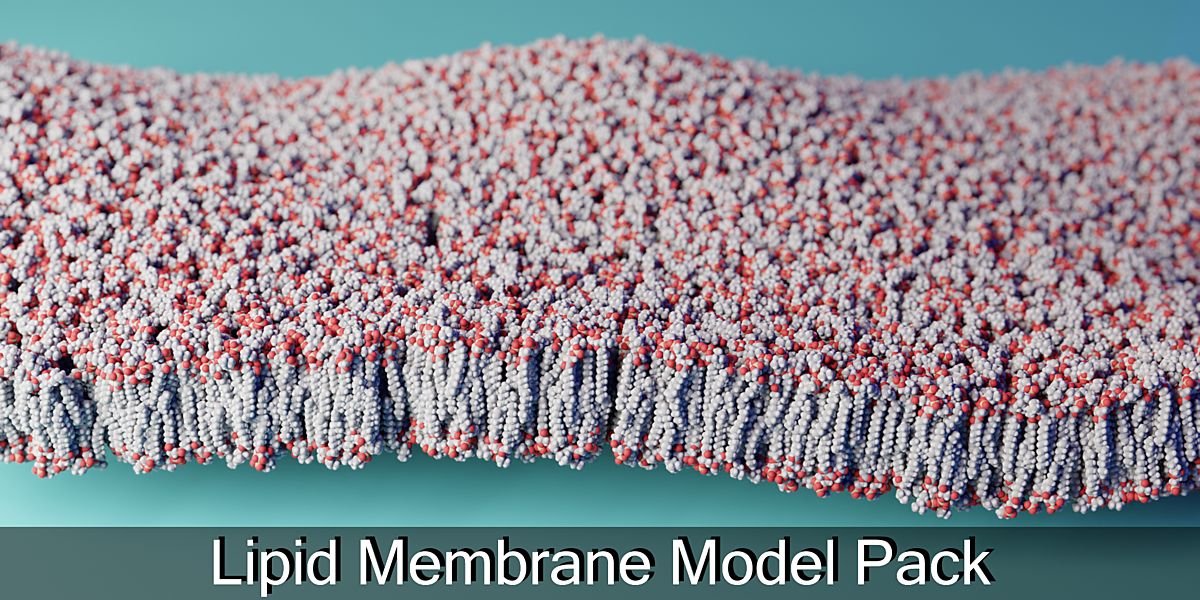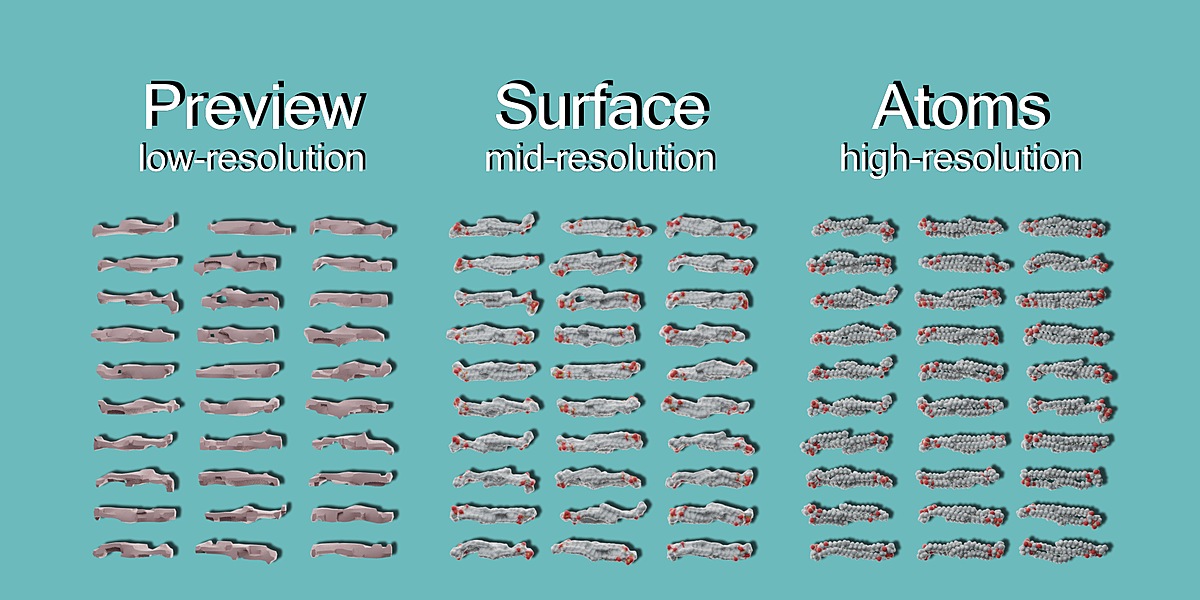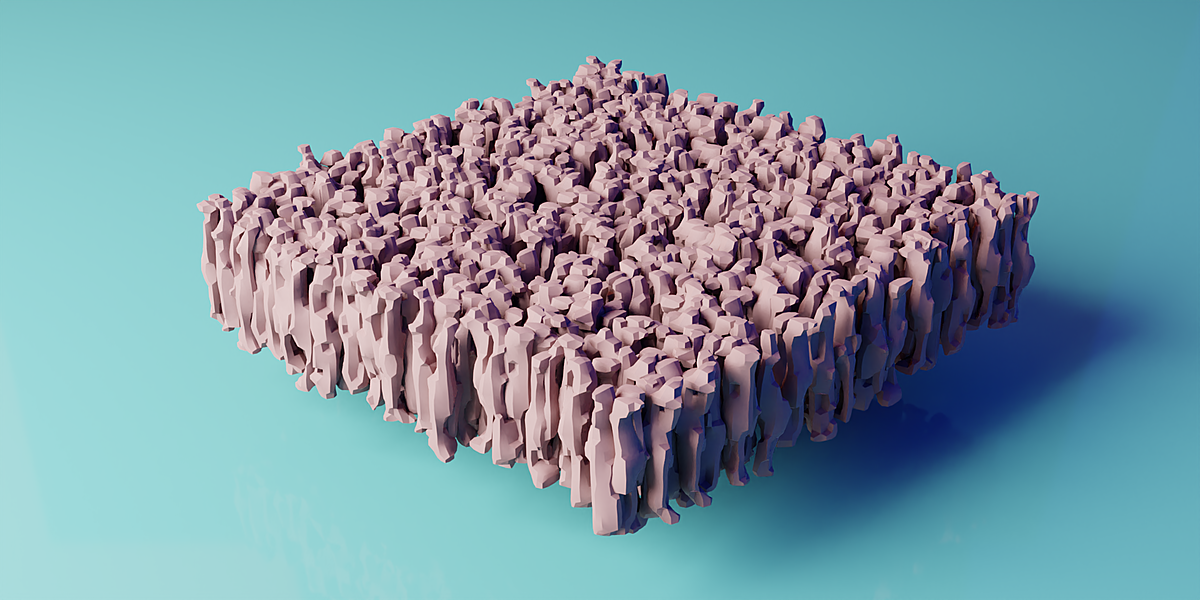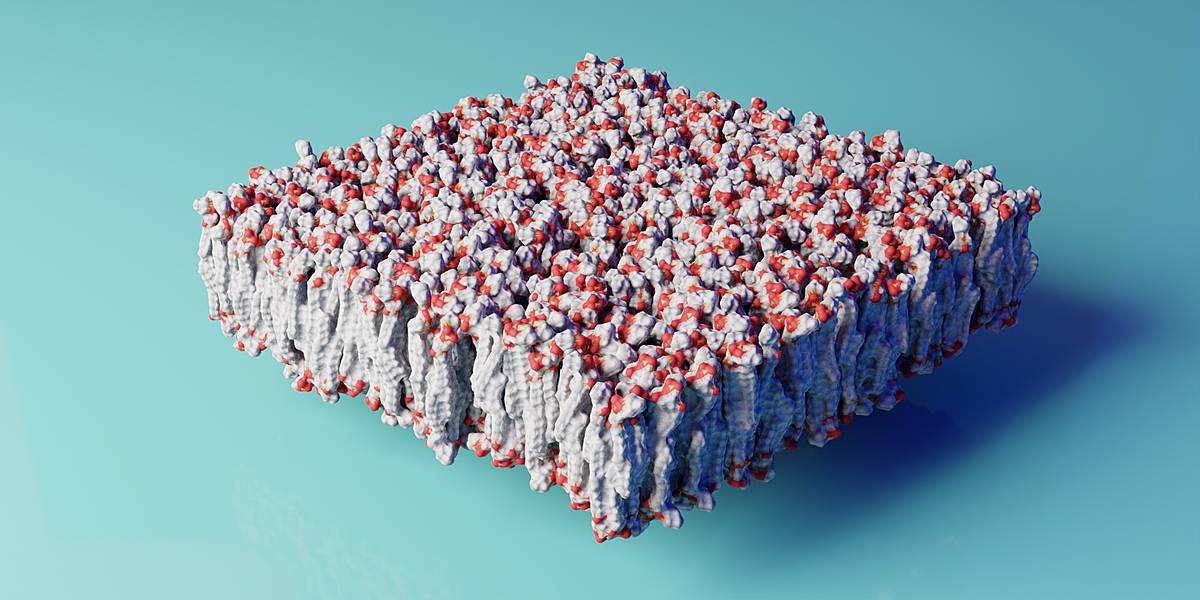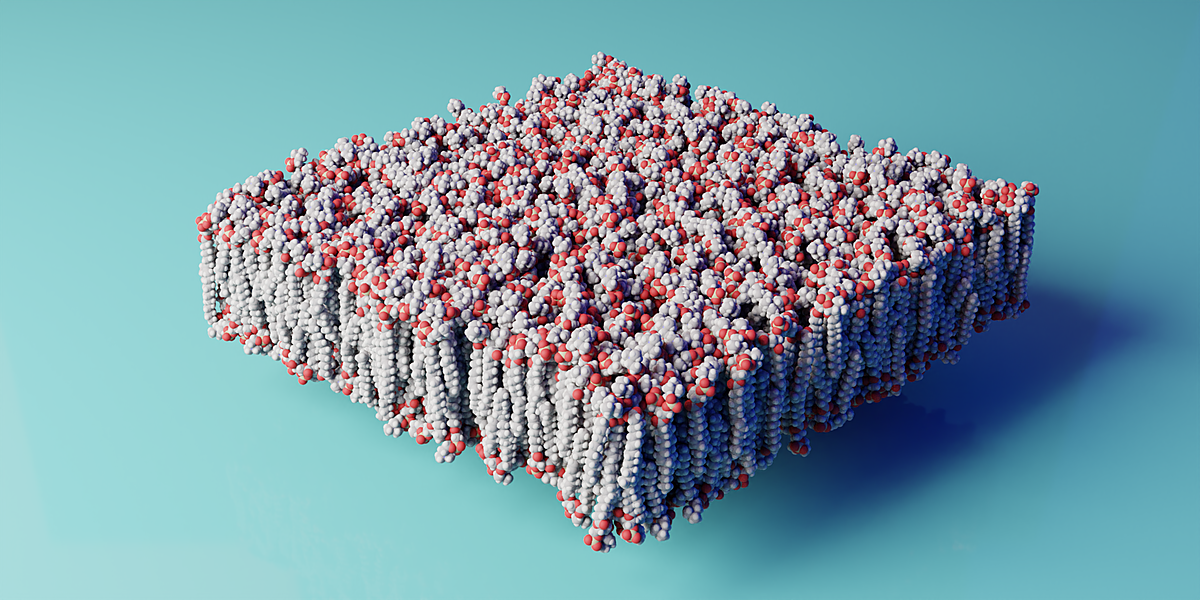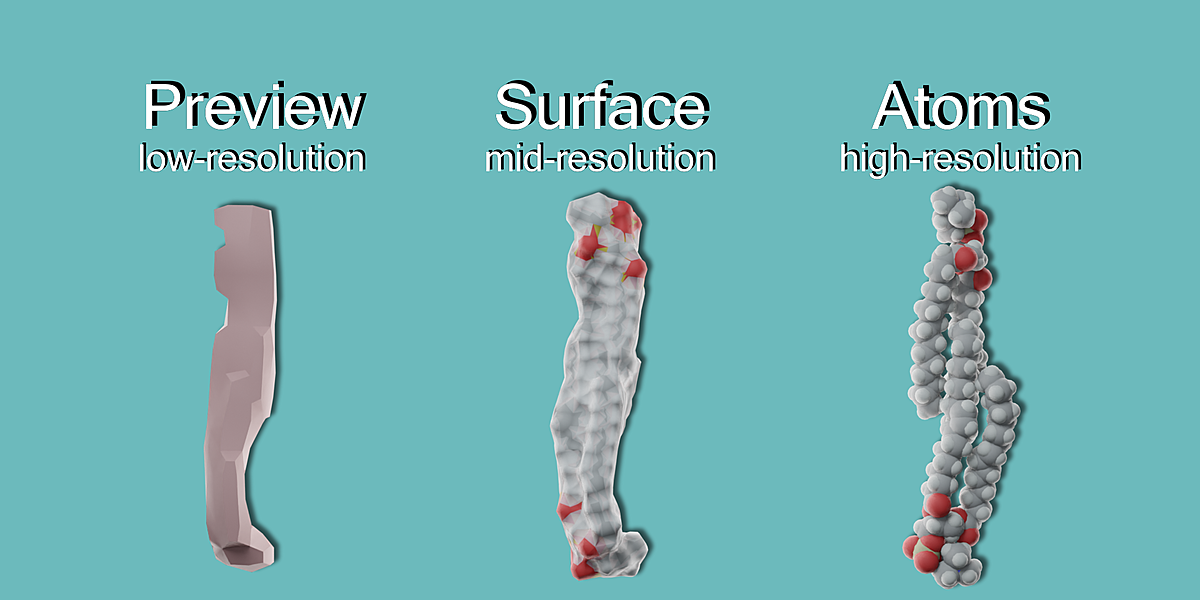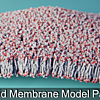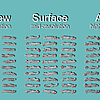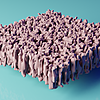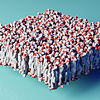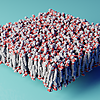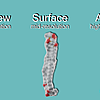Lipid Membrane Model Pack
When you want to add lipids to your scene, go File>Append and locate the blend file "Lipid Pack.blend". Click on the collections folder and you will see the following.
Select "Particle_System" and then append it to your scene.
This will a plane with atomic lipids into your scene. If you wish to use one of the other styles, append that collection into the scene.
The lipids are quite large, but we don't need to see them. Uncheck the box in the Outliner tab. And also untick the particle system while we're at it.
Much better. Now selecting the object we would like to add the particle system to, head over to the particle system tab and add a new particle system.
Now change the particle system to the one appended from Lipid Pack.blend
now to improve viewport performance, I change over the rendered collection from "Lipids_Atomic" to "Lipids_Preview".
Now we can increase the number of lipids until we are happy with the density.
Make sure to untick "Show Emitter" and change the rendered collection to either "Lipids_Atoms" or "Lipids_Surface" for your final render.
Additional notes: The dimensions of the lipid collections are large. However, they are scaled the same as proteins imported from Chimera or PyMol. For my work, I scale both proteins and lipids by 0.01. This is why the particle system has a particle size of 0.01. If you use a different scale, make sure to change it here.
Also, The lipids are UV unwrapped to a 4-pixel by 4-pixel image. To change the colour of the lipids, remove the image texture in the shader editor and assign a new colour for the lipid.
Discover more products like this
atom Jack Kaiser lipid Lipids biochemistry biology atoms membrane atomic bilipid spring20 Cell membrane
